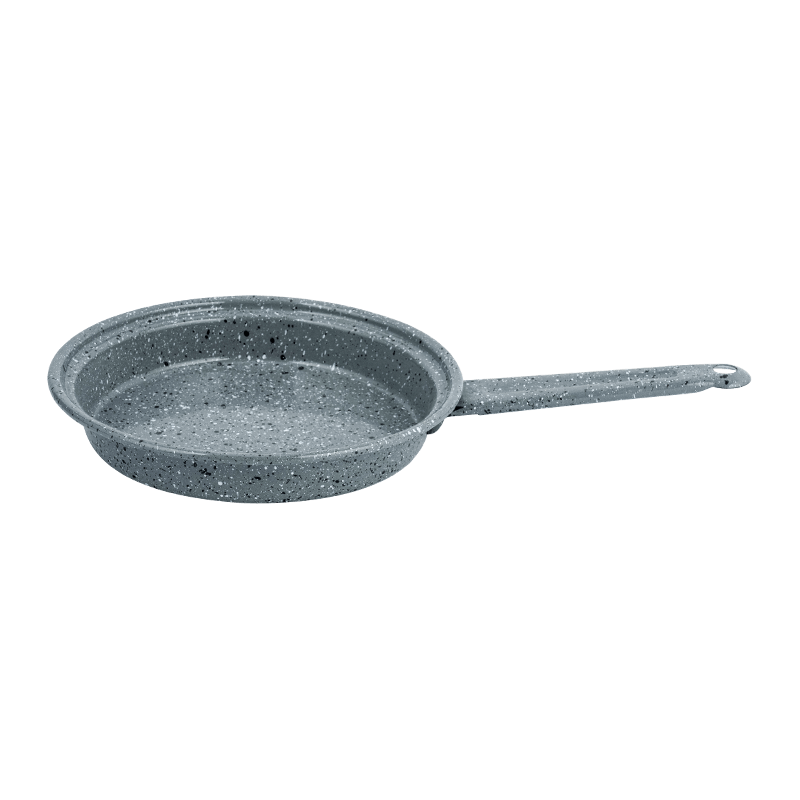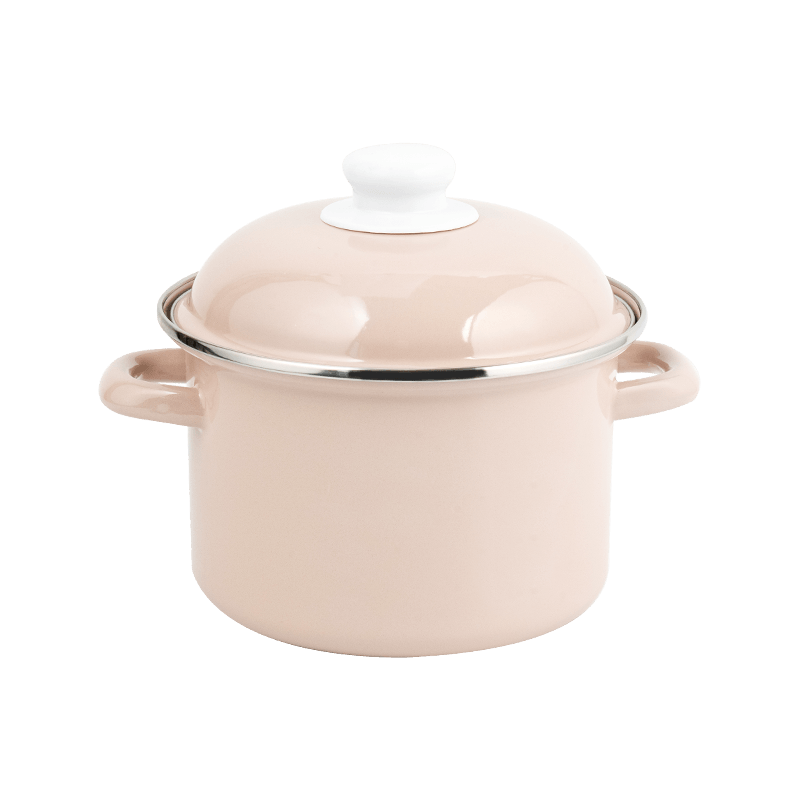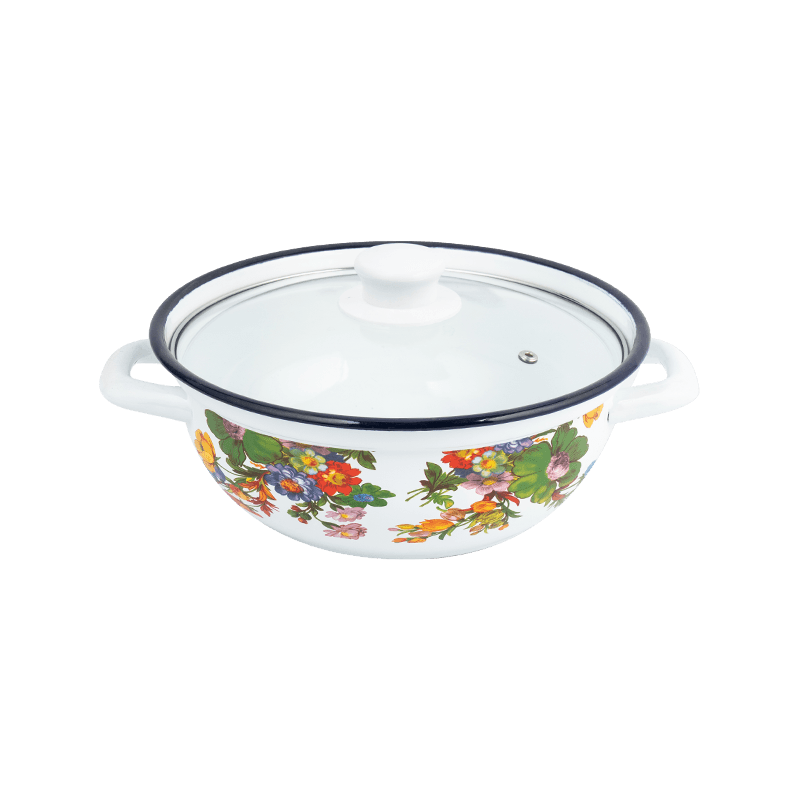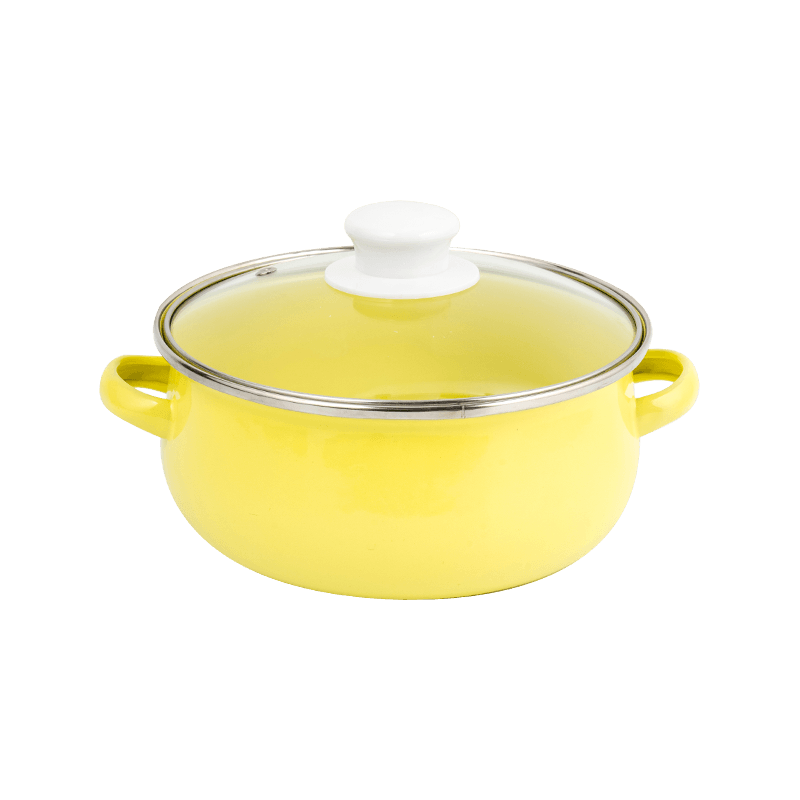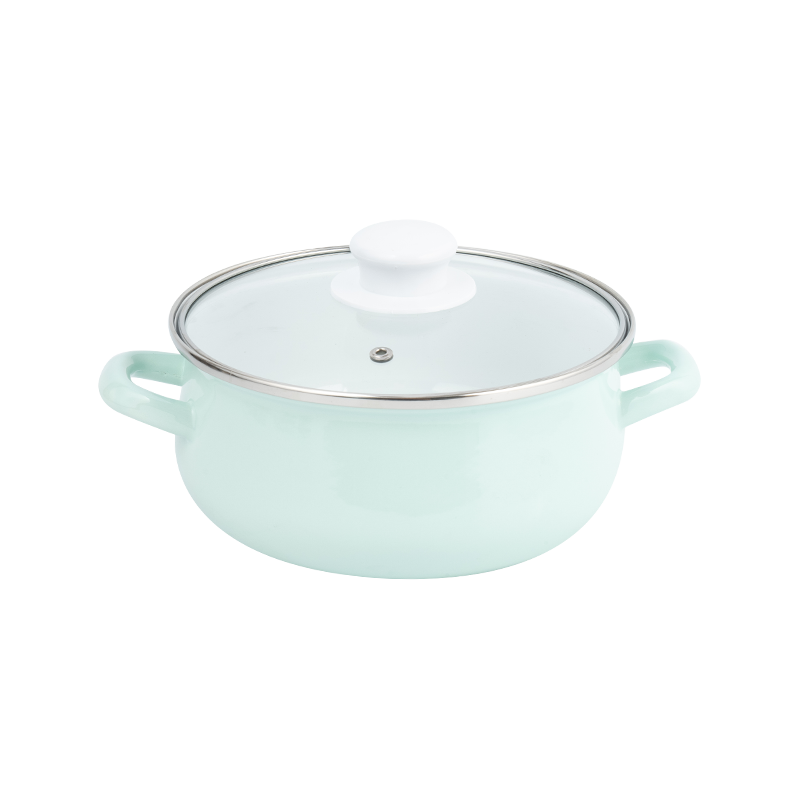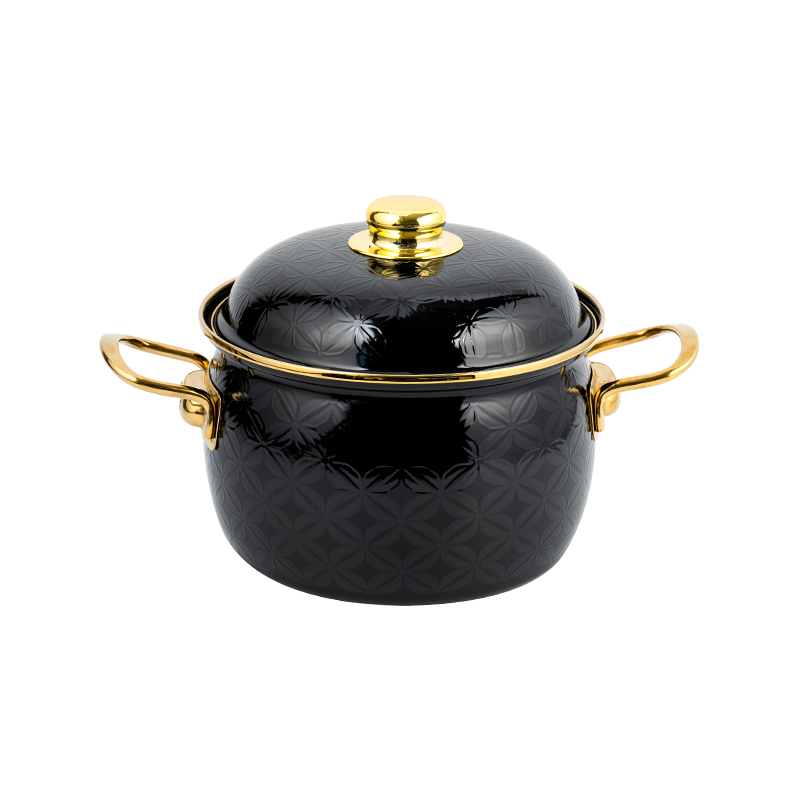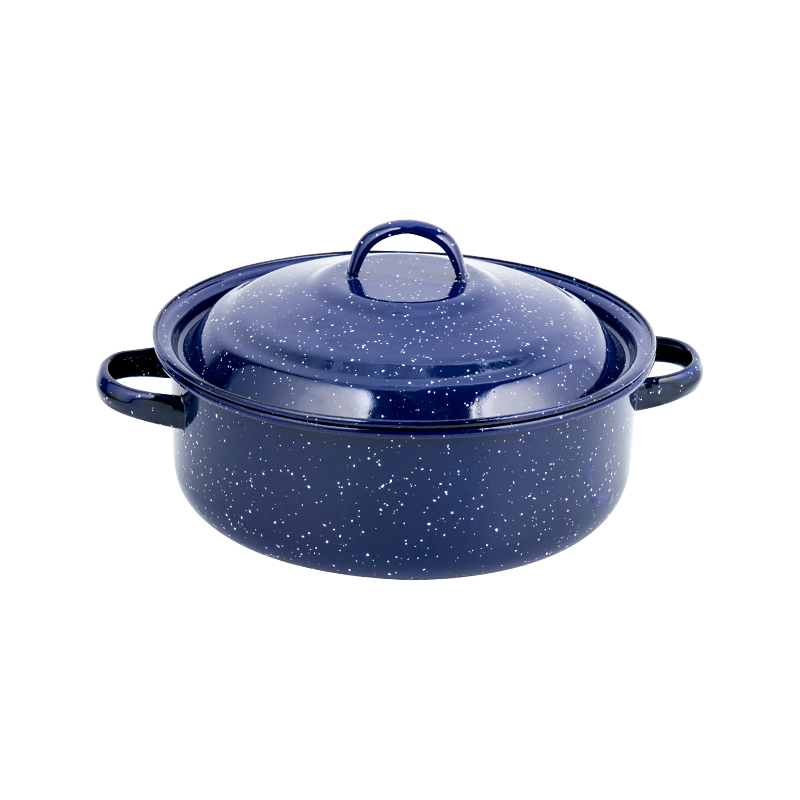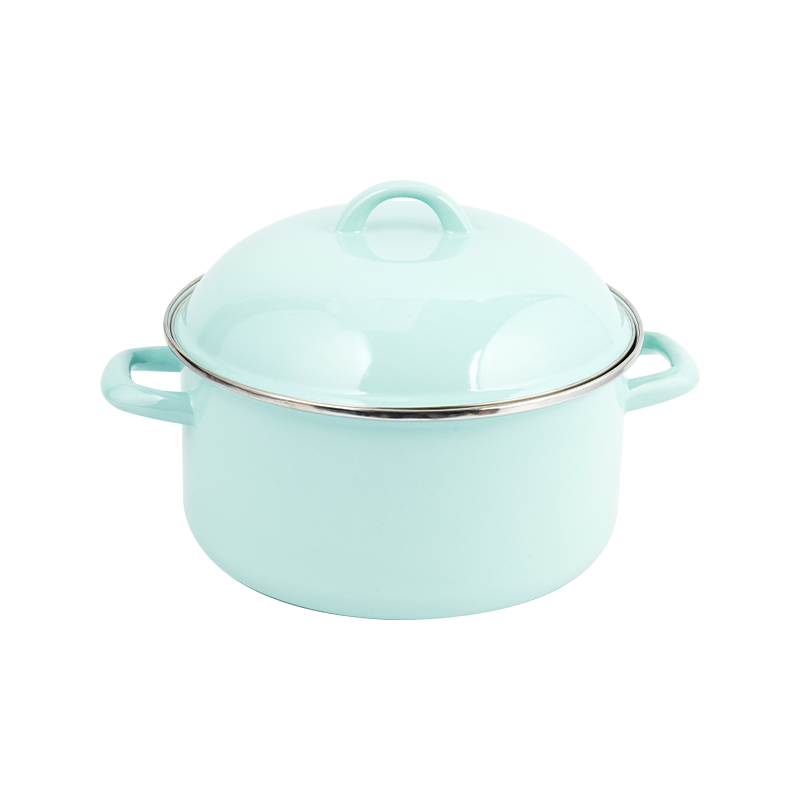The exquisite and bright Double Handle Enamel Pot is the face of the kitchen, but the stubborn scale and food stains on the pot wall, pot bottom and even the handle root are like a lingering shadow, which greatly reduces the cooking experience.
Analysis of the causes of stubborn stains
Although the glass glaze layer on the surface of the enamel pot is smooth, it is inevitable that scale (mainly calcium carbonate and magnesium carbonate) and cooking residues will be deposited after long-term use. These stains are closely combined with the glaze surface, and conventional scrubbing often has little effect. Improper use of steel wool or strong acid and alkali cleaners can easily damage the glaze surface, which is not worth the loss.
Scientific cleaning solution: citric acid + baking soda dual-effect empowerment
Combining the practical experience of many professional chefs and housekeeping experts, the following gentle and efficient decontamination methods have been proven to be effective:
Basic pretreatment: Use warm water and a small amount of neutral detergent to initially clean the pot to remove surface floating oil and loose residues.
Citric acid dissolves scale (core steps):
Pour clean water into the pot to ensure that the stained area is completely covered.
Add food-grade citric acid powder (ratio is about 1-2 tablespoons per liter of water, or refer to the product instructions).
Turn off the heat after heating the water to boiling, and let it soak for at least 1 hour, or overnight for better results. Citric acid reacts chemically with calcium and magnesium ions in scale to dissolve and loosen them.
Baking soda treats organic stains and removes odors:
Pour out the citric acid water, and after the pot cools down slightly, sprinkle an appropriate amount of baking soda (edible alkali) on the remaining stains (especially burnt food stains).
Moisten the baking soda with a small amount of clean water or white vinegar (the two will produce a mild foaming reaction when they meet) to form a paste.
Cover with plastic wrap and let it stand for 30 minutes to 1 hour. The weak alkalinity and micro-abrasive properties of baking soda help break down grease and food residues.
Gentle scrubbing and thorough rinsing:
Use a soft sponge, scouring pad (rough surface) or nylon brush, dip in baking soda paste or a small amount of neutral detergent, and gently scrub the treated stain area.
For small gaps such as the base of the handle, you can use an old toothbrush to carefully clean it.
Key tips: Avoid using steel wool, metal brushes or strong detergent powder to prevent scratching the glaze.
Rinse thoroughly with plenty of clean water to ensure that there is no detergent residue.
Refresh and dry: Wipe with a soft dry cloth or dry naturally to restore the smooth appearance of the pot.
Scientific principle highlights: Citric acid, as a natural organic weak acid, can effectively chelate calcium and magnesium ions in scale; baking soda (sodium bicarbonate) emulsifies and decomposes grease through a weak alkaline environment, and its fine particles provide moderate physical friction. The two work together to safely conquer the stain fortress.
Long-term care suggestions:
Wash promptly after daily use to avoid stain solidification.
Wipe the outside of the pot immediately after the cooking liquid overflows.
Regularly soaking in citric acid solution (no heating required) can effectively prevent scale accumulation.
The key to cleaning stubborn stains on enamel pots is to treat the symptoms accordingly - using citric acid to dissolve scale, baking soda to attack organic residues, and always adhere to the principle of gentle physical cleaning. This gentle, effective, and proven cleaning guide will help you easily restore the bright luster of your favorite pot and make cooking time comfortable again.

 English
English 中文简体
中文简体




